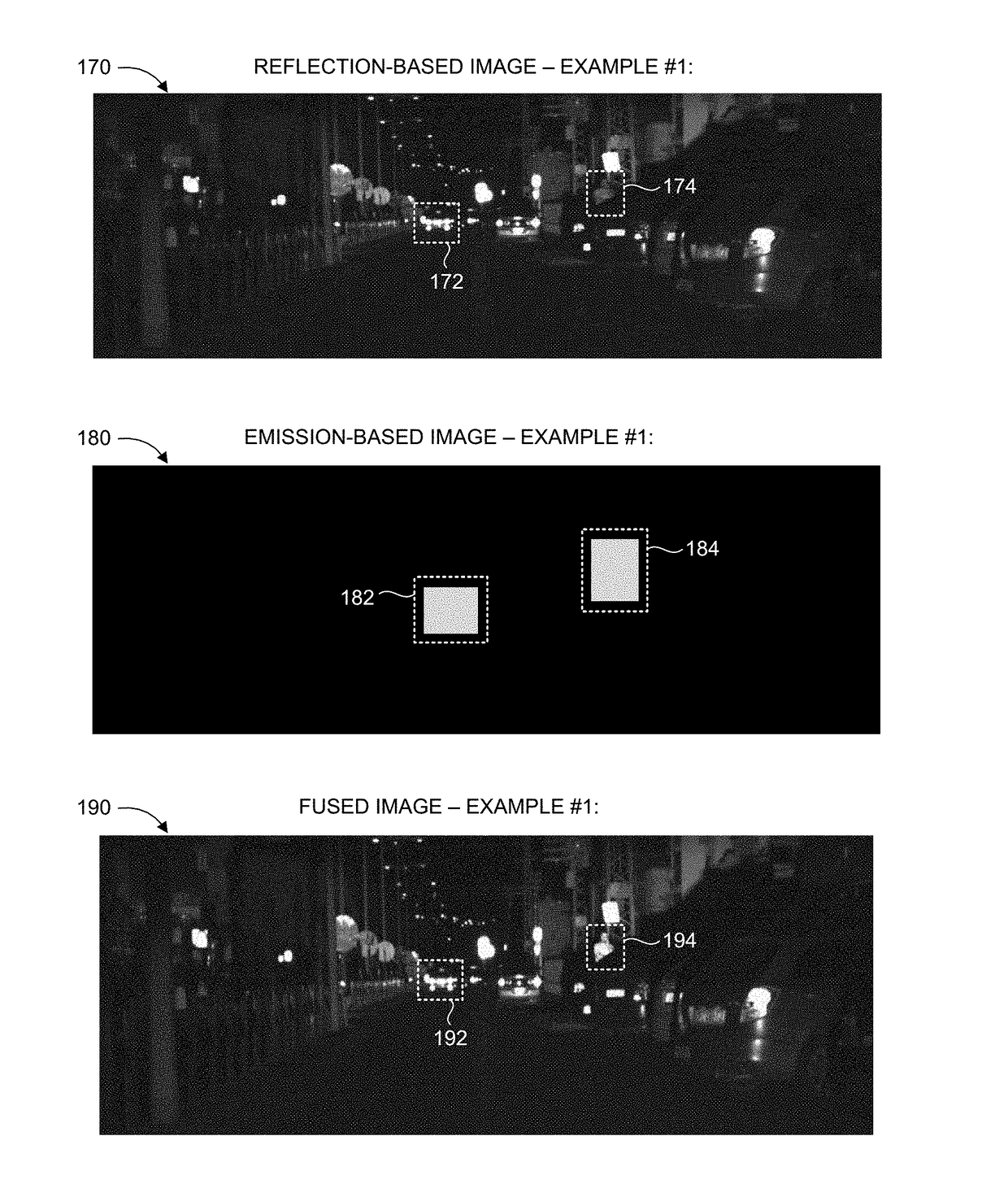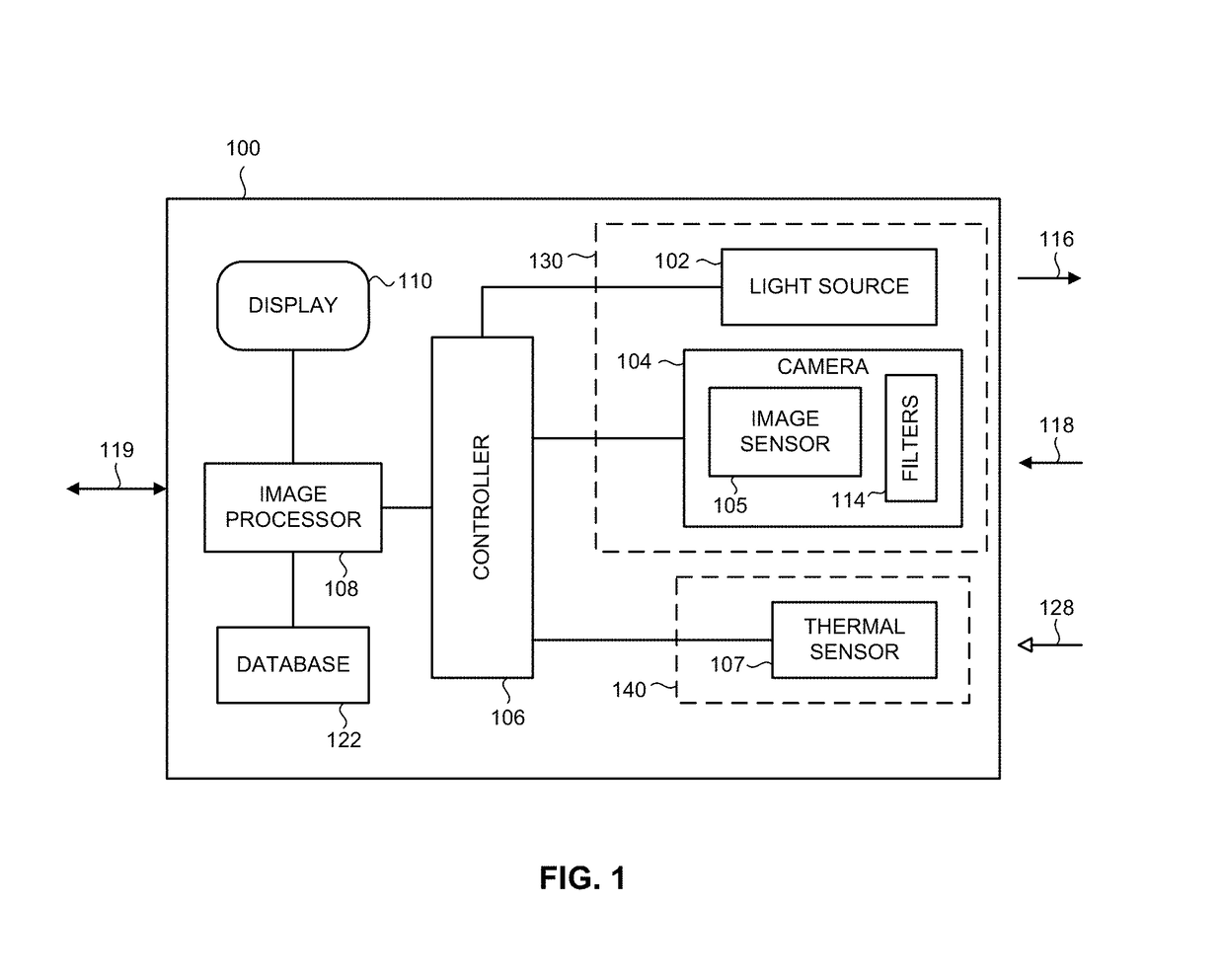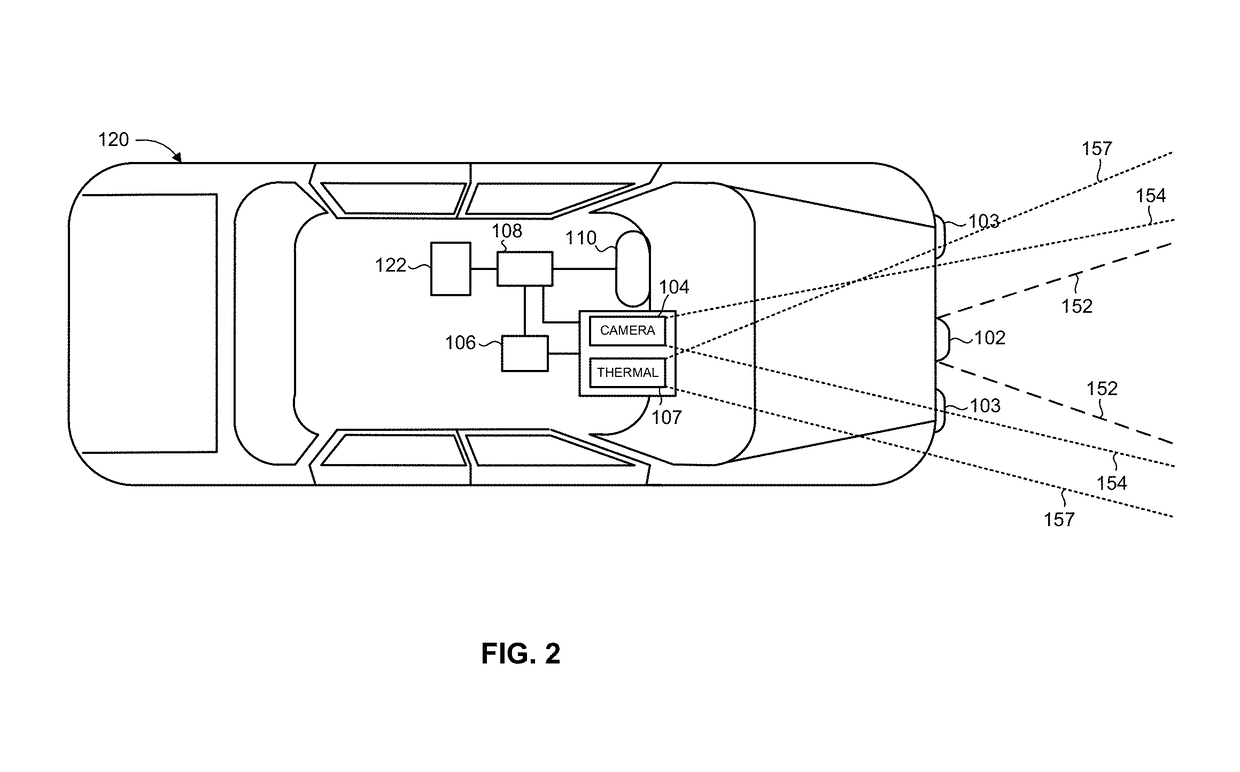Object Detection Enhancement of Reflection-Based Imaging Unit
a reflection-based imaging and object detection technology, applied in the field of active and passive imaging systems, can solve the problems of insufficient contrast, insufficient illumination, and unclear and indecipherable image conten
- Summary
- Abstract
- Description
- Claims
- Application Information
AI Technical Summary
Benefits of technology
Problems solved by technology
Method used
Image
Examples
Embodiment Construction
[0020]The present invention overcomes the disadvantages of the prior art by providing an imaging system and method that enhances the object detection capabilities of a reflection-based imaging (e.g., active illumination) detection unit, using an auxiliary detector based on emission-based (e.g., passive) imaging. The imaging system adaptively sets or adjusts a detection characteristic relating to the reflection-based detection unit, such as by selectively modifying at least one imaging parameter or detection threshold, based on information obtained from the emission-based imaging detection unit. The imaging system may further adaptively set or adjust a detection characteristic relating to the emission-based detection unit, based on information obtained from the reflection-based imaging detection unit. A reflection-based image and emission-based image may be combined to form a merged image, which may be processed and / or displayed. Following an initial processing of the images acquired...
PUM
 Login to View More
Login to View More Abstract
Description
Claims
Application Information
 Login to View More
Login to View More - R&D
- Intellectual Property
- Life Sciences
- Materials
- Tech Scout
- Unparalleled Data Quality
- Higher Quality Content
- 60% Fewer Hallucinations
Browse by: Latest US Patents, China's latest patents, Technical Efficacy Thesaurus, Application Domain, Technology Topic, Popular Technical Reports.
© 2025 PatSnap. All rights reserved.Legal|Privacy policy|Modern Slavery Act Transparency Statement|Sitemap|About US| Contact US: help@patsnap.com



